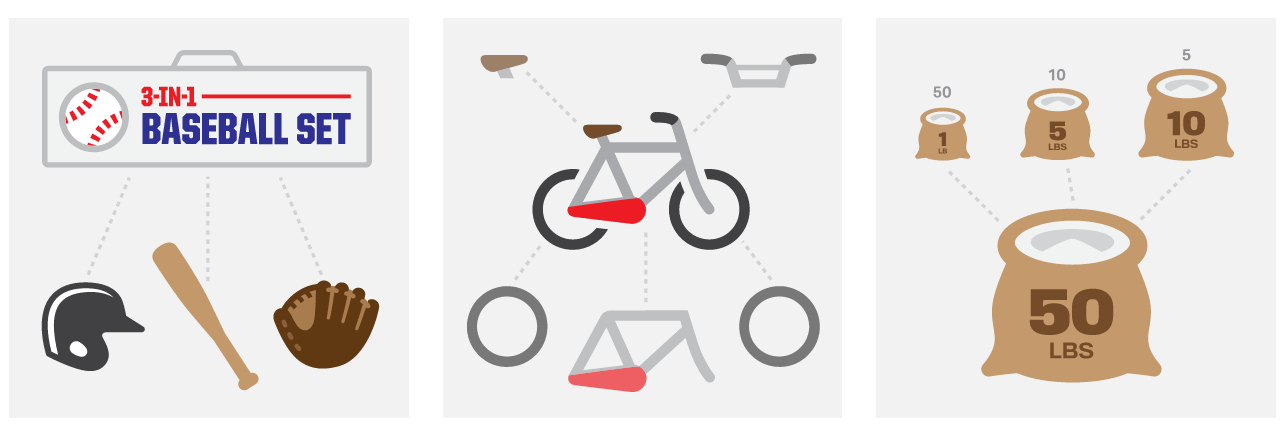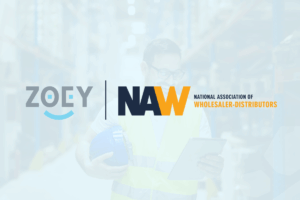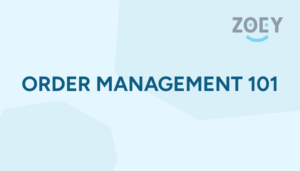The following is a guest post from Harrison Dromgoole, Content Creator at Ordoro.
Excess inventory is a major pain point for e-retailers large and small, and most of them experience it at some point in their careers. Whether it’s worse than not having any inventory to meet demand is debatable, but one aspect is for sure: excess product in storage that isn’t sold is cash tied up in inventory.
Inventory is your biggest investment. It’s a gamble — you’re buying up product in hopes that you can sell it for more. But the longer it stays on the shelf, the more it will cost you. It’s cash locked in your product; it’s less cash flow, less money to purchase more inventory.
Those are the disadvantages of excess inventory, and the quicker you act to resolve problems, the better.
As more customers have pursued online ordering, you may have felt tempted to stock up, especially after a year like 2020. But it’s important to start getting rid of that straggling inventory to make way for new inventory, whether it’s a new product or higher quantities of your best-selling SKUs.
Fortunately, there are plenty of ways to get rid of it.
Product Marketing That Moves Excess Inventory
The very first part of the purchase process that a customer experiences is your product marketing. It’s about how you present your products to the customer. It’s how you first promote them. And there are three aspects of product marketing that you can adjust to get any dud-of-a-product off the shelf — your product photos, copy, and website design.
Product Photography
Customers buying online don’t have access to the first-hand experience a brick and mortar offers. They can’t tinker with the product in person, see it in action, or feel it, making online purchases a little more risky on their end. That’s what makes product photography so important.
Product images that are phenomenally realistic, as backwards as it sounds, are preferable. Depict it accurately but also professionally. It’s only an image, but it’s the first introduction your customer has to your product, so it must be as accurate and clear — but not overdone — as possible.
Consider updating the images for those lackluster products, especially if they’re looking bland or not-so-hot. Of course, taking professional photos can get pricey, but there are ways to do it effectively on your own. Check out these in-depth photography guides on doing it all yourself.
Craft Some Copy
Words are pretty easy to ignore (but thanks for making it this far in the blog post). Plenty of them are out there, they’re replaceable, and an image can convey a thousand of words in a second. Nonetheless, the copy you use is a part of your product marketing, and it can really supplement an image.
Even something as simple as adjusting a couple of words on your product descriptions can impact conversions. Evidence: check out these 15 cases provided by HubSpot where word choice mattered. Something as easy as changing a word really can make or break a sale as you work to sell your excess inventory.
Add some word magic to those products that are failing to move out the door. Above all else, explain how the product offers value to the customer and tie it closely to your brand. Engaging and personable copy can work wonders, but do be careful not to overpromise in the copy. Aim to be straightforward but unique — just like your product images.
Position and Design
Perhaps lagging inventory is being overshadowed by other more popular products. Place it on center stage and measure its performance. E-retailers focus the spotlight on slow-selling products all the time — you can slap a “best seller” label on it (even if it’s not all that true), you can incorporate it into some sort of “most popular” filter or category, or you can feature it on your homepage banner to attract eyes.
Or you can go for the classics. Look into setting up a promotion for it.

Push Some Promotions to Sell Excess Inventory
Promotions work. Blame it on our psychological hardwiring that makes us not want to miss out an opportunity. Just like physical retailers, e-retailers can easily launch promotions that get dust-collecting inventory out of storage.
There are a few common ways to implement a promotion, and all of them revolve around a discount. Because of that, a little math needs to go into how your implement a promo; you need to make sure it’s affordable enough on your end so that, although it’s discounted, your inventory still offers some sort of return on investment once sold.
And if you want peak performance, definitely get the word out about each sale by utilizing your email marketing and social media. The more exposure, the better.
Clearance Sale
A clearance sale is the most straightforward of all sales. You’ve probably experienced it many of times — it tells the customer that you’re sitting on inventory that needs to go, even at the expense of heavy discounts.
Typically, retailers and e-retailers alike will launch clearance sales when the demand for a product begins dropping. Sometimes it’s seasonal — like when a merchant wants to get rid of winter apparel to make room for spring and summer or when a patio furniture provider drops prices after the 4th of July — and sometimes retailers will hold clearance sales year round, shuffling products in and out as their demands fluctuate.
Those poor performing products are fair game for a clearance sale. Consider launching a “Christmas in July” clearance event that offers discounts on them in preparation for the fast-approaching holiday season.
And keep in mind clearing out items is not limited to B2C retailers – B2B businesses may be updating SKUs, eliminating underperforming product lines or looking to move excess volume of a set of SKUs. A Clearance opportunity may be better price breaks on volume, or a lower starting point, but you can use some of the same tactics to encourage your wholesalers, distributors or brand sales channels to take on excess inventory you wish to get out of your warehouse.
Flash Sale
No promotion makes the psychological fear of missing out as clear as a flash sale. If the name isn’t self-explanatory, a flash sale is a sudden, limited-time sale. It’s a perfect opportunity to put the consumer’s feet to the fire and motivate them to buy, all while selling excess inventory.
Flash sales are also useful in that they’re most rewarding for your loyal and most-engaged customers, the guys that are paying attention to your brand. When you unexpectedly promote a flash sale on your marketing mediums like email or social media, only those customers that are engaged will get word of it, and the sale’s time restriction and discount ideally encourages them to gobble up the stock you’re trying to eliminate.
Special Discounts
Who needs some sort of timely event to launch a promotion? It’s totally possible to greenlight a promo for excess inventory whenever product quantities get a little too high. It’s only a matter of creating a one-off promotion with a suitable discount that entices customers to buy it up.

Utilize Shipping
Shipping has a profound influence on getting customers to purchase online. It’s been the make-or-break factor since ecommerce got off the ground. For instance, 90% of shoppers are enticed by free shipping, and 24% would spend more to reach a free shipping threshold.
Tapping the power of shipping to sell excess inventory is totally on the table. A couple of methods are out there to accomplish this: free shipping or fixed shipping rates on those items struggling to get out the door.
Fixed Shipping Rates
Free shipping is the tactic most e-retailers look to to sell off products. But that can potentially mean absorbing the entire cost of shipping, which sometimes isn’t affordable in terms of margins. You may desperately want that inventory out of storage, but suffering such a loss isn’t an option.
Fixed shipping rates are an opportunity here. Calculate the cost of shipping that lagging inventory and determine a rate that’s discounted for the customer, yet bearable on your wallet. Then market that those items with discounted shipping, whether it’s through a pop up, a banner, or bolded text in their product descriptions.
Free Shipping
Free shipping sells. That adjective is powerful, even more so when you add “shipping” to it. For the vast majority of online consumers, it’s the number one motivating factor in buying online — look no further than Amazon Prime’s ever-rising popularity.
To put the strategy of free shipping to work, all you need to do is identify that slow-to-sell inventory, and market the fact that they have free shipping attached to them. Promote it on banners, send out an email blast, post on social media — free shipping attracts wallets, so be sure to get the word out.
But be sure it’s affordable on your end. Killing off that excess inventory typically means either reaping lower-than-usual margins or even losing a bit of money. By having to pay for the cost of shipping, you will make those reduced margins worse.
To remedy that issue, you can either raise the price of the product to absorb that cost or you can implement a free shipping threshold, a designated order value that qualifies for free shipping. To figure out a threshold that’s perfect for you, check out this excellent walkthrough by Kissmetrics.
But thresholds open up another avenue of eliminating unwanted inventory. The goal of a threshold is to get average order values up by enticing consumers with free shipping. And a solid way of encouraging them to reach that bar — all while getting rid of stagnant stock — is through bundling products.

Create Some Kits
Product kitting, also sometimes called bundling, is the process of creating a single unit for sale that’s actually made up of multiple related products. Those products can be components, like all the pieces of a bicycle, or they can be part of a set like an assortment of action figures.
There are plenty of advantages to kitting orders — a boosted average order value is definitely a plus — but chief among them is its ability to get slow-selling inventory out of your hands. The gist of it: take that overstocked inventory and make it more desirable by pairing it with other products.
Leech Off of High-Performers
You likely love your best-performing products that sell reliably throughout the year. Let their success rub off on your lagging inventory by kitting them. Take the slow-sellers and group them with more appealing products so the customer feels they’ve found a bargain. They’re getting that desirable product that sells well at a marginally higher cost, but receiving another useful product as well.
Compliment Them
One of the more effective methods of kitting is through complementary products, products that are closely related to one another. It’s common in the brick and mortar space; you’ve probably seen your local grocer offer a coupon for related food or drink items. The same line of thought applies online.
For instance, let’s say you’re selling Barbie products for who-knows-what reason. The kids love GI Joe Barbie; it sells rapidly. But those kids’ parents tend to avoid buying the Barbie Ballistics Missile Launcher, making it a slow-seller. Bundle the two together and tack on a slight discount to create an irresistible deal that gets those Missile Launchers flying.
More Bang For Their Buck
It’s a classic — “two for the price of one” or “buy one get one free” or “buy one, half off the next.” To slice away at unwanted stock, go for another tried and true method: discounted bundles of the product in various quantities.
Be as generous as you can afford with the discount. But be aware that the discount must be enough to make the customer believe they’re getting a deal that they’d lose out on if they ignore it. The best part of about every bundle sold? Same as the other: each one sold means multiple units off your hands.





